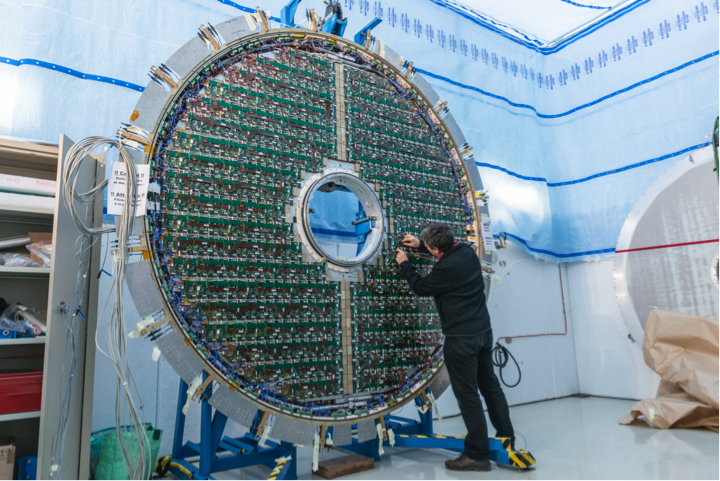
As reported previously (ECAL Preshower removed from detector for repairs), both Preshower (ES) endcaps were removed temporarily from CMS and moved to the SX5 building at the end of 2013. This was due to four faulty “feedthroughs” (two per endcap) that provide power to and monitoring of the ES internal heating system. A repair zone was prepared in the surface hall: a concrete-walled room with a high-ceilinged “tent” equipped with a clean constant airflow, to create a semi-clean environment. In early 2014 the ES discs were opened so that the faulty feedthroughs could be removed.
The feedthroughs are rather complex, comprising three separate PCBs sandwiched between layers of aluminium to create airtight connections between the inside and outside of the ES. New feedthroughs were produced at CERN and tested thoroughly, including after thermal cycling (to mimic the conditions inside the ES over the coming ~8 years). They were installed in the ES at the beginning of April.
During the first years of operation of the ES in CMS, a few faults developed, decreasing the number of working channels. A couple of these faults were due to bad contacts on low-voltage connectors at the periphery of the ES, which have also now been fixed. And with the ES open, it was possible to intervene on one faulty optical hybrid used to read the data from 4 of the 4288 silicon sensors in the ES. The optical links inside the ES do not use conventional fibre connectors due to lack of space, so all fibres are spliced into ribbons of 12 that are then passed through the ES sealed volume. The faulty optical hybrid board was unplugged and its fibre was cut, before a new fibre was spliced into place and the new board was plugged in. This delicate operation was fully successful. 100% of electronics channels in the ES are now operational, with only two silicon sensors not working due to irreparable faults.
The ES discs were then closed and everything tested once again. The ES is now ready for installation and commissioning later this month (for ES+) and beginning of May (ES-).
by Dave Barney for the ECAL group
- Log in to post comments

